
When I first moved to San Francisco, I would have told you that I’d never leave. But just a year and a half brought more change than I realized it could, and then came my time to say goodbye to a city that will forever be a great love of mine.
Living there, it was impossible for me to be anything but prolific in my photography. Hardly a day would pass without seeing something I needed to capture. I feel a sense of ecstasy for the aesthetic moments that occur in San Francisco, particularly the small, the mundane, and those that could only happen there.
Sign-up for The Bold Italic newsletter to get the best content about life in the Bay Area in your inbox every week. What could go wrong?
My leaving was a confusing reality. I worried in my final weeks that I would freeze and do nothing when I so badly wanted to do everything. So in a kind of ambient I-am-moving-across-the-country panic, I made a goal: to photographically pour one out for this great city by riding to the ends of Muni lines and capturing those outermost parts of the city.
This became a gently ambitious organizing principle to inspire both a more decentralized understanding of San Francisco and an homage to my love of shooting it. I never imagined that my move would end up coinciding with the early days of the pandemic we’re now experiencing and that these photos would take on added meaning as my last limitless photo wander before quarantining.
In retrospect, I am all the more glad I took the time to do this when I could still move around just for the sake of it.
The Muni light rail lines are as follows:
- M and J — End at Balboa Park
- N — Ends at Ocean Beach
- L — Ends at SF Zoo
- K and T — End at Sunnydale Visitacion Valley
Unless you live near one of them, you likely only know the names of Muni’s end stops as noises blasted over station speakers on repeat. Until I took on this challenge, I somehow hadn’t ridden any of the lines to the end. They only formed the abstract city boundaries of my imaginary — never visited, oft heard. Discovering this exposed how limited my sense of San Francisco was.
I went places I wouldn’t have otherwise. Today, I can access these moments of calmness, from right before everything changed.
My biggest fear was that I was gamifying both my photography and my departure. But I realized the act of moving is already gamified. It simulates an end of time and end of place. As you approach the final weeks and days, everything becomes a possible “last.” Tasks seem to accumulate faster than you get through them. Decisions appear like boulders in your path, each demanding to be moved: donate, discard, pack?
Having these explorations helped my process of saying goodbye to the part of my life that played out there. The project offered hope and humility in the thought that there is so much, always, I don’t know.
What story do these photos tell? San Francisco is a teacher of great neighborhood culture.
And public transit, ever the subject of disparagement — ever ripe for improvement — still provides an important function, and so much joy to me.
From the trains, I saw garage sales, people moving out of and into apartments, owners walking their dogs, families eating breakfast, a couple walking with Philz in hand, and a man wearing a mustard-colored turtleneck in 60-degree weather. On one train, so immersed in what I was seeing, I missed the last stop (a residential street in the Outer Sunset) and had to sound the alarm for the driver.
It is a warm, lasting joy to fall in love with San Francisco. And in love, I shall gladly stay from afar.
Balboa Park, my first destination, is home to one of the two Muni rail yards where cars are stored and repaired. I felt like I was seeing a piece of the offscreen production space that makes daily service possible (… and sometimes not). The webs of Muni lines announced the sizable transit hub behind me.
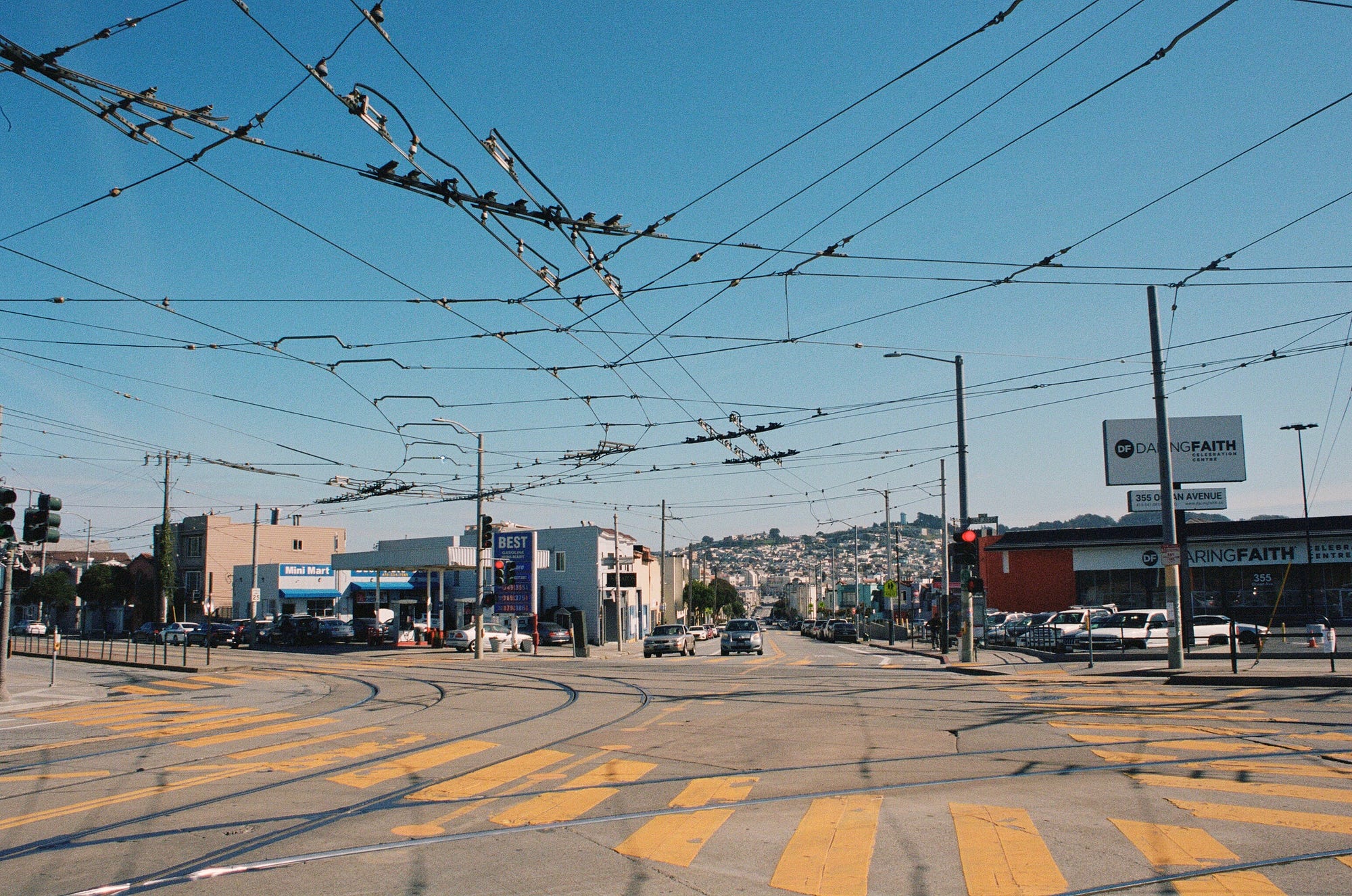
I wandered on toward more residential streets. On the February day I went there, Balboa Park was warm and slow. It was one of those unannounced summer days that throws itself into the mix in winter. I often shoot homes, buildings, and streets, but on this radiant day, the sight of perfectly displayed and coordinated red briefs in the window was a welcome surprise.

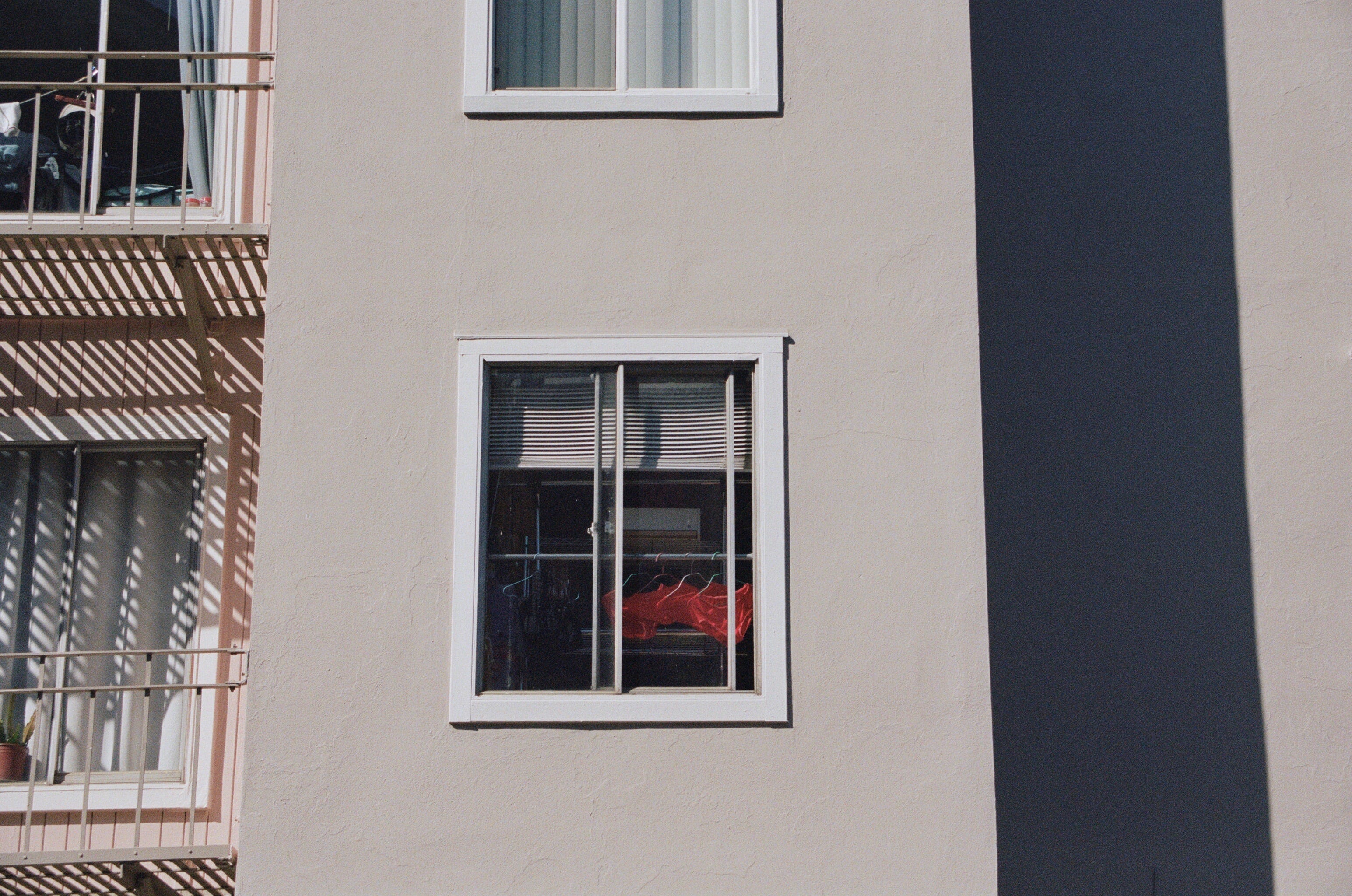
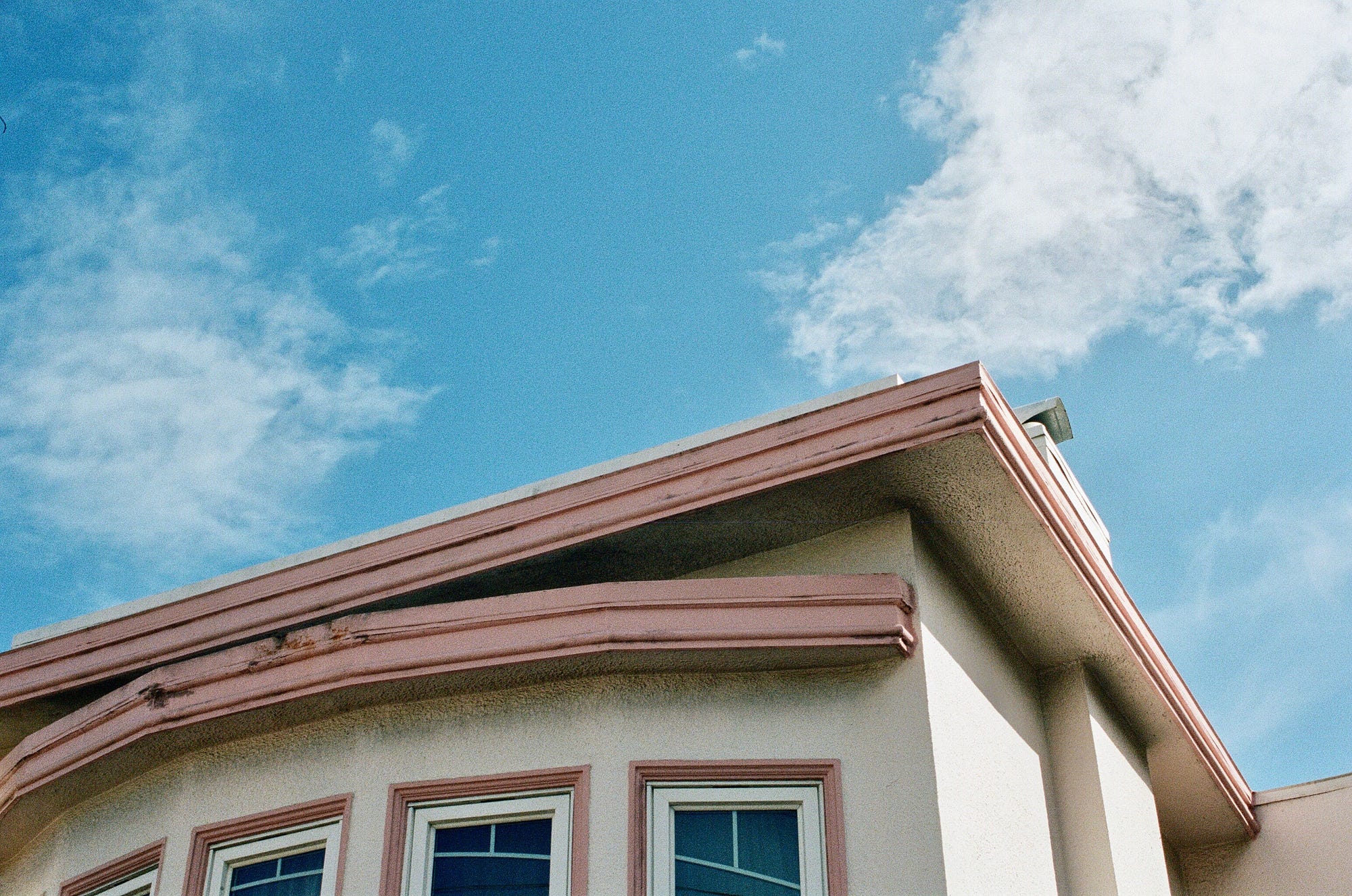
Ocean Beach was one of those places I had always meant to visit and yet had never managed to make time for until this day. The end of the line was easy to miss, and I was surprised by how quiet it was. Like most San Francisco neighborhoods, interesting cars seem to hide in plain sight. They’re a favorite subject of mine, and postal service vehicles are even more beloved.
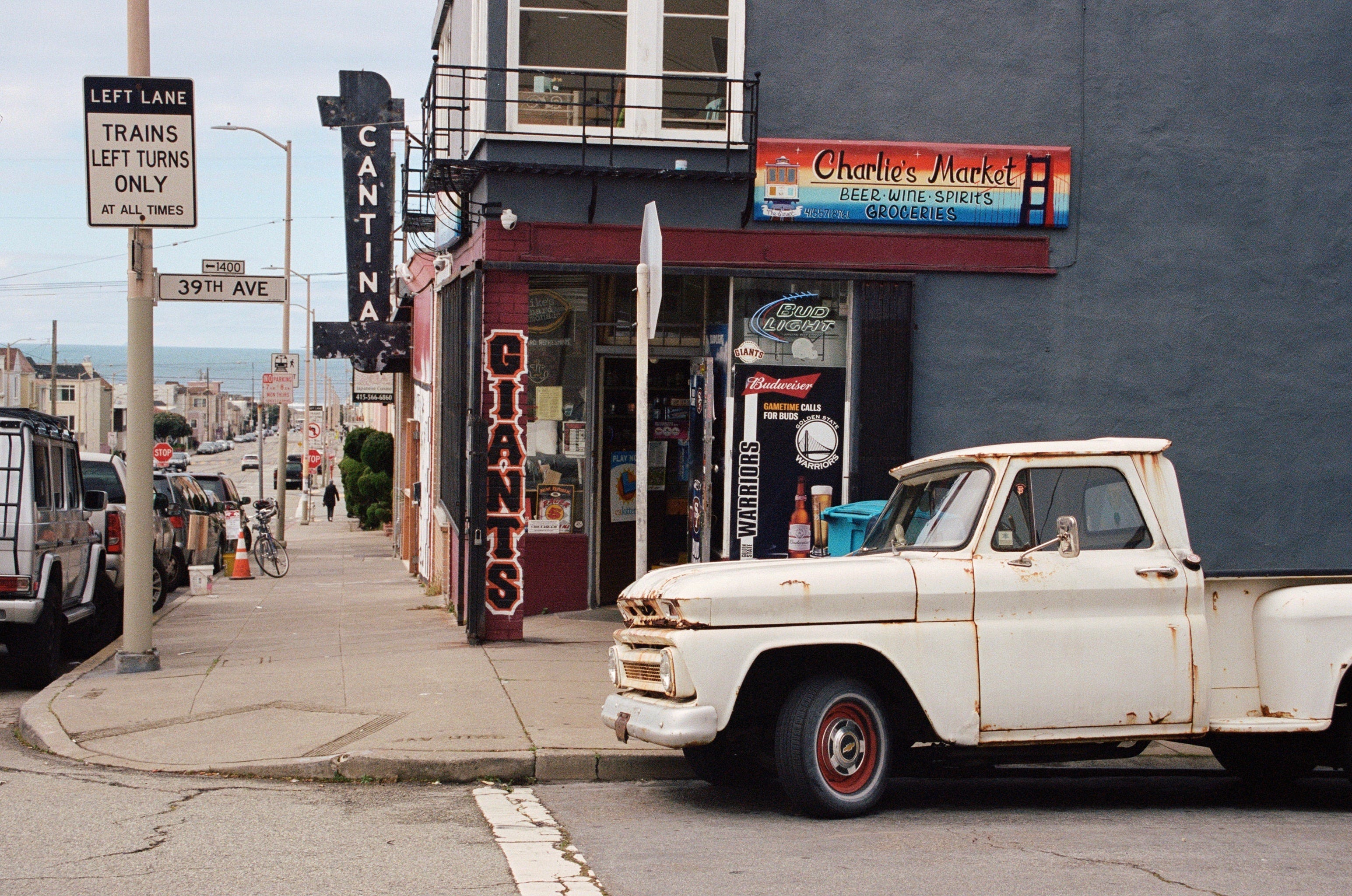

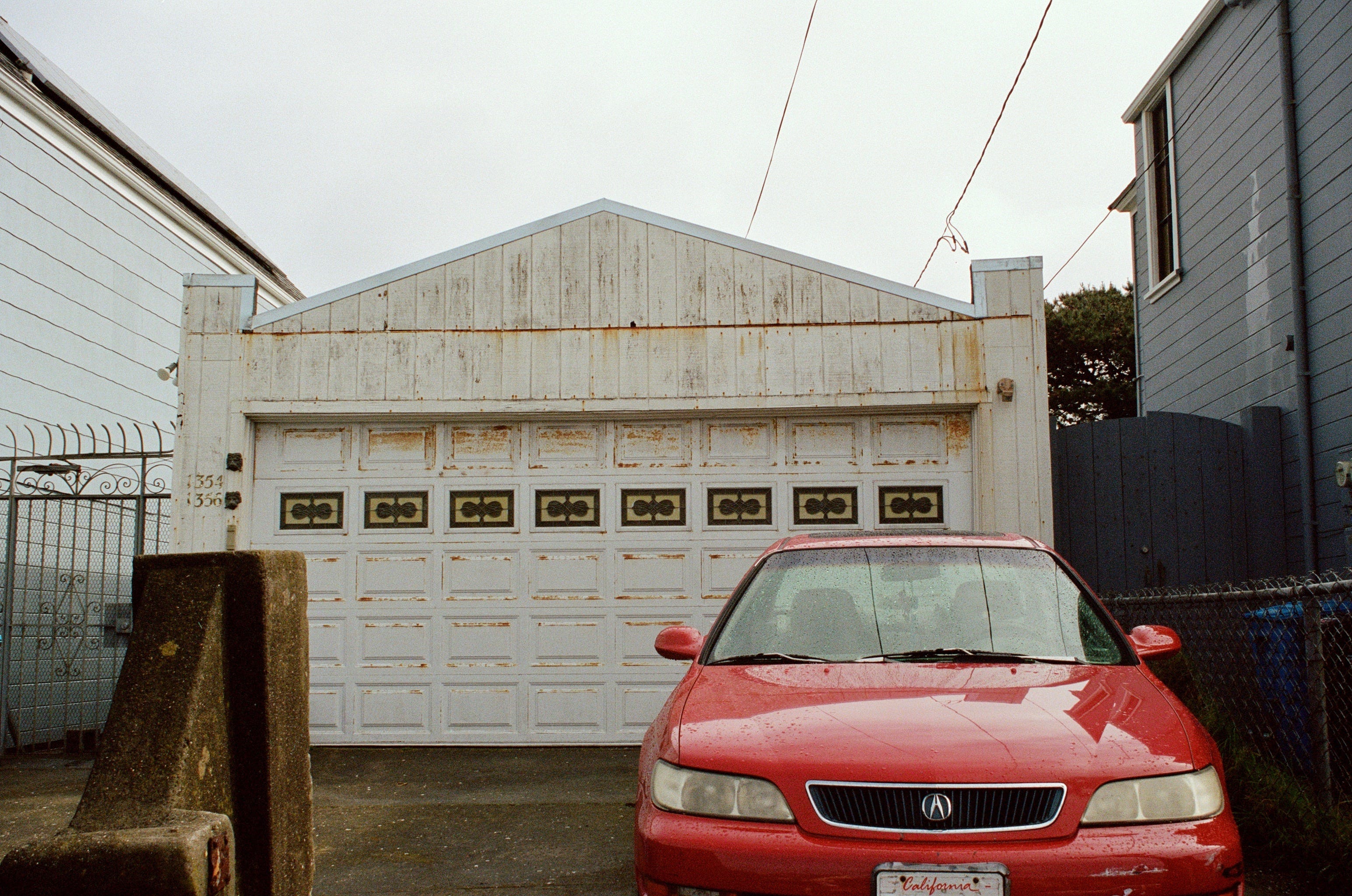
As someone who lived in Noe Valley, both a flat vista and the sight of the ocean made the neighborhood feel gravitationally different. The streets near the Ocean Beach stop are long gridded avenues, uniform in width but not in houses or atmosphere. There were plenty of oddities to be found.
This commitment to finding more succulent real estate is a lesson in perseverance, and made me think of staircases as a potential focal point for a future project.

Ten minutes later, I thought the same of San Francisco entryways. Seeing ice dropped into a bed like this was unexpected and created an image I would have never thought to make. The shades and shape of cubes are difficult to capture in a photograph, but something about the textural contrast made this work.
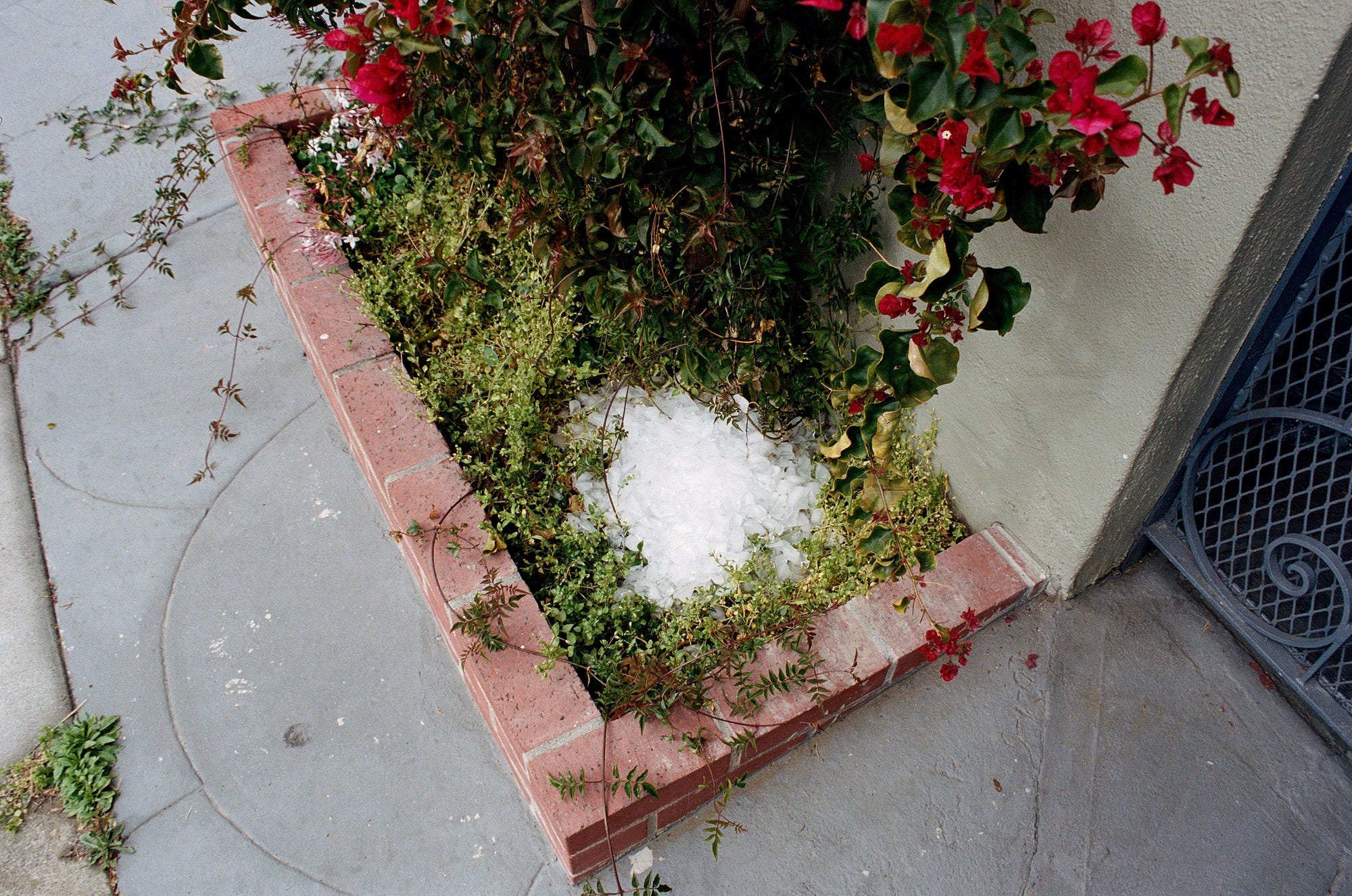
Like the Ocean Beach one, the San Francisco Zoo stop is on a residential street. My daily use of public transit had me going from Noe Valley to SOMA and back, a commute I found mostly unfortunate. To travel on empty cars, with a less populated destination than starting point, was a welcome change.
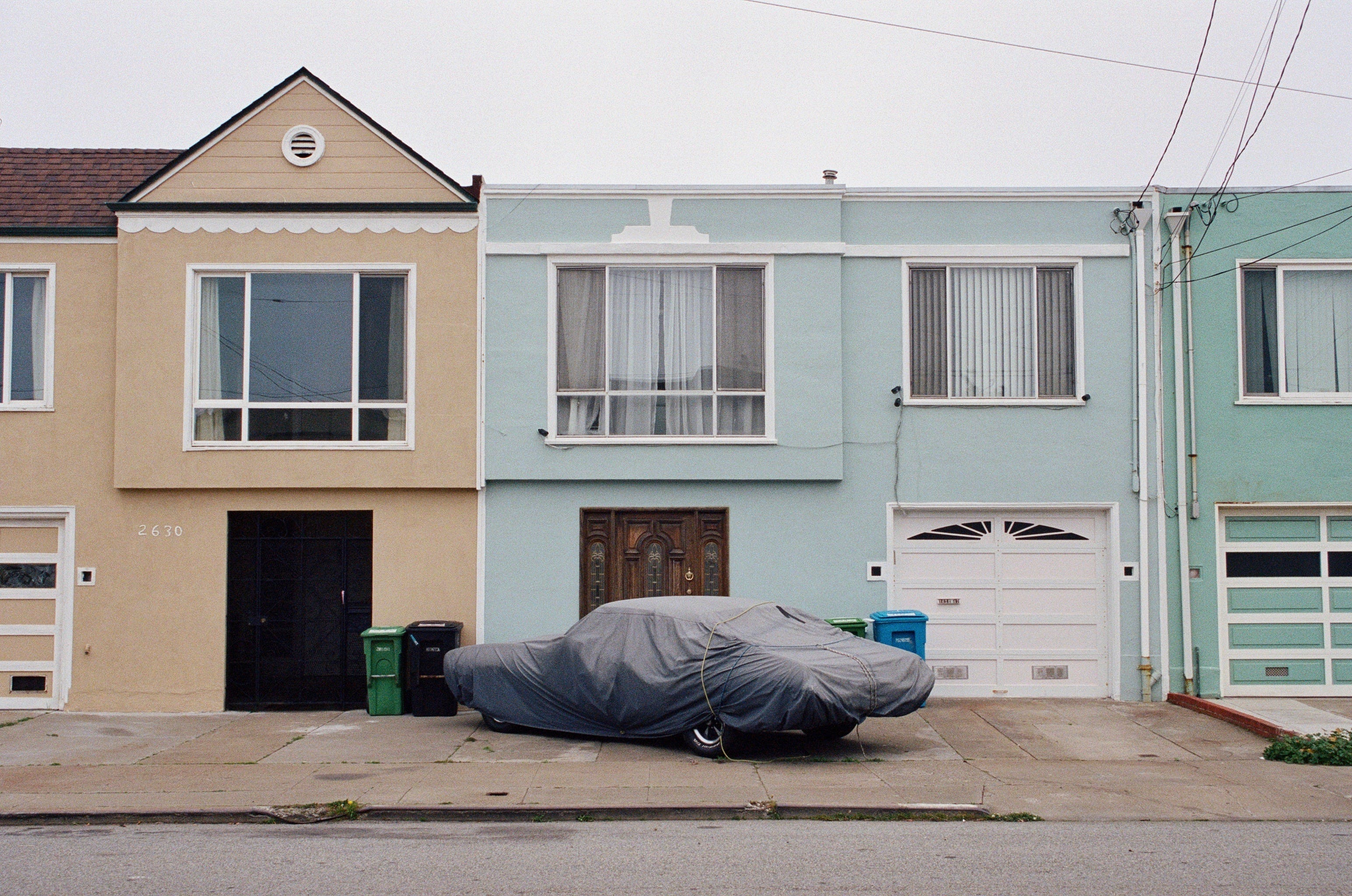

I walked to the zoo out of curiosity but found the Ocean Park Motel along the way a more fascinating subject, like something out of a Hitchcock film. Even on an overcast, windy day, a somewhat eerie pastel color story isn’t hard to find. Walking below the Ocean Park Motel sign, I found it to be a necessary angle — novel and familiar at once. The beach was quiet and contemplative, and I liked the sight of the 23 Monterey taking pause at the end of its line.
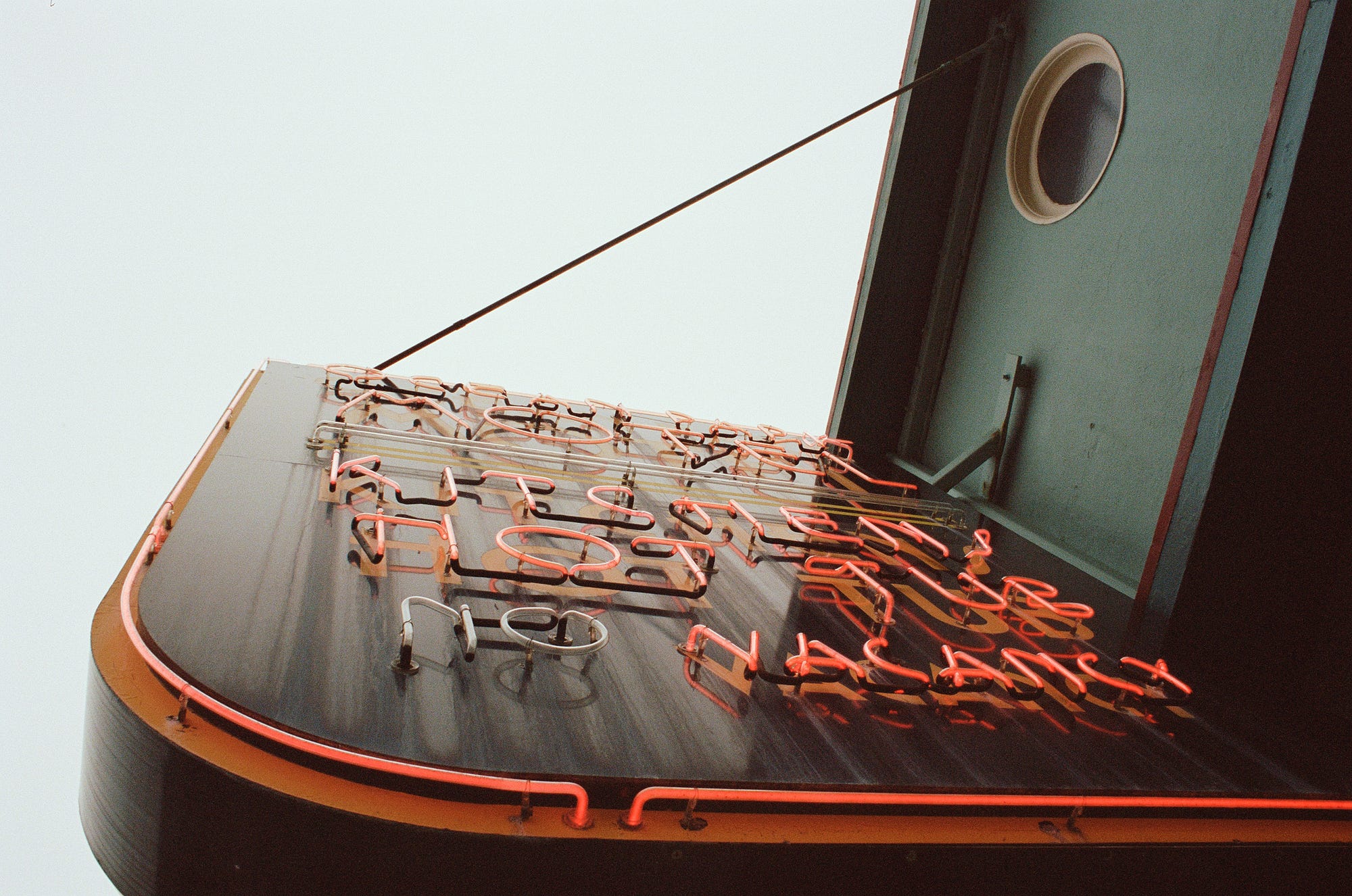


Visitacion Valley, my last destination, seemed to have a color palette of its own. There, and all other stops, I never had the feeling that it was just more of the same of San Francisco. Each neighborhood was unique. A woman in a colorful sweater saw me and my camera and said, “Welcome to Visitacion Valley!” which she explained was SF’s “best-kept secret.”
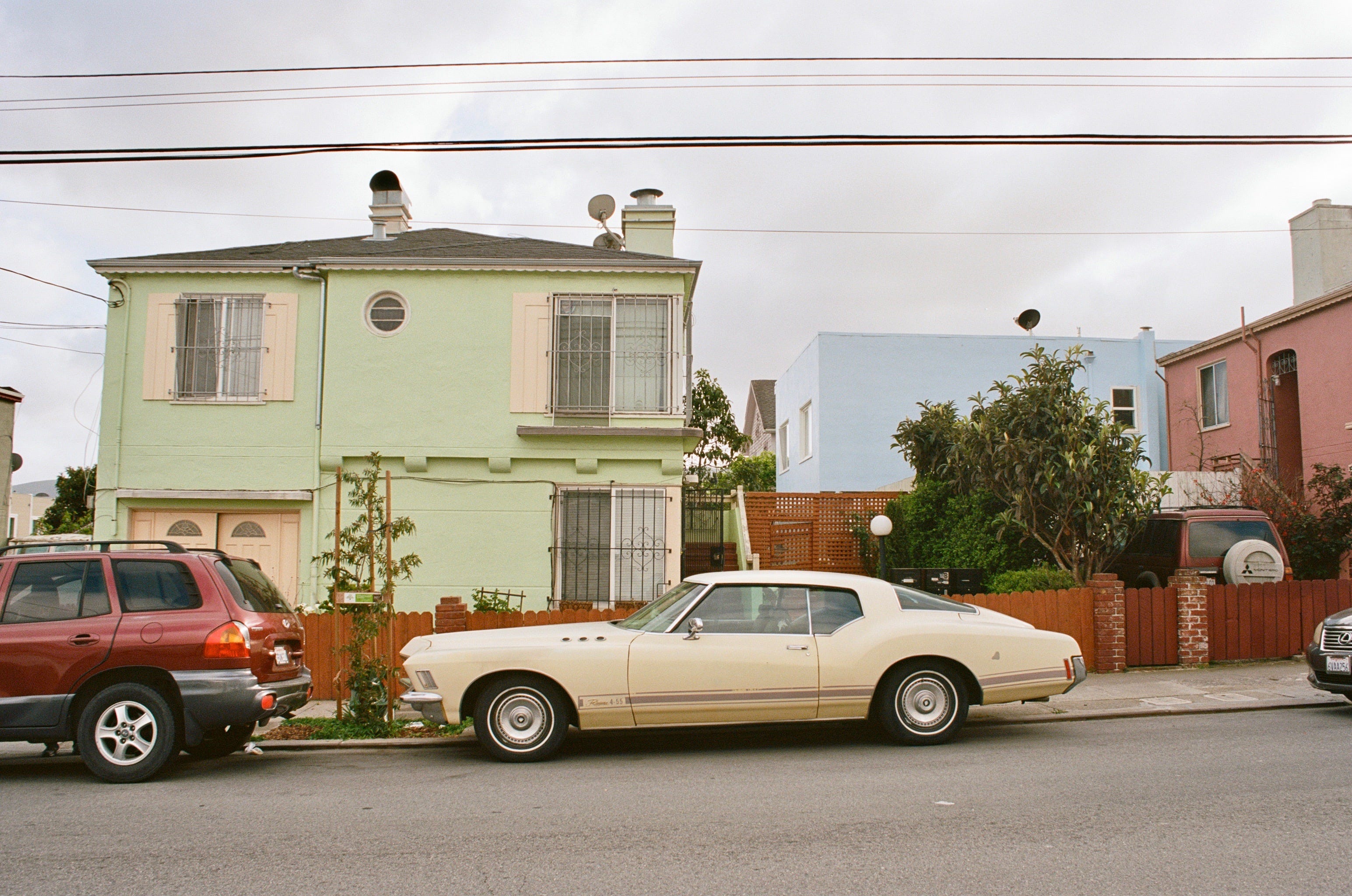
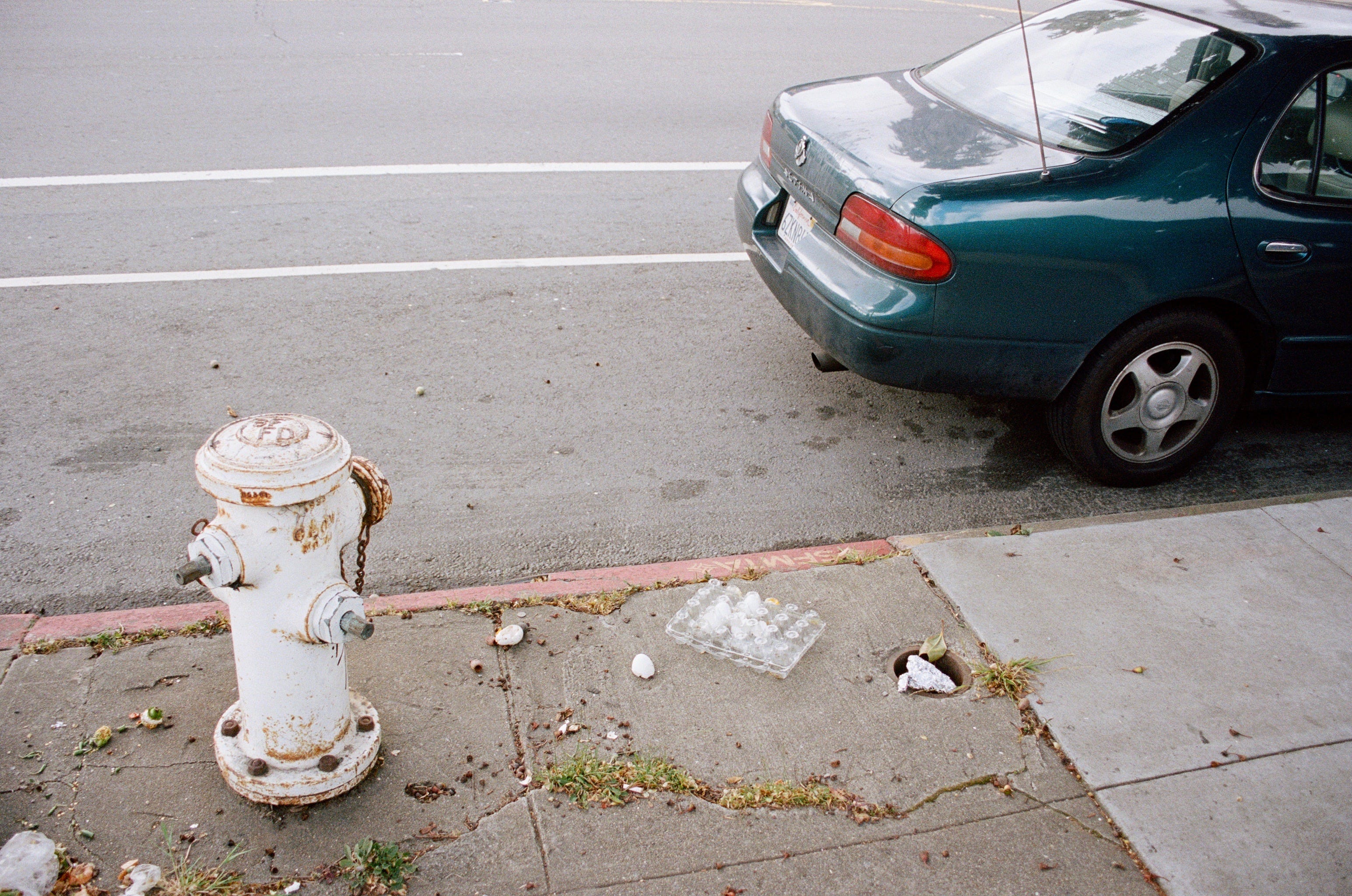
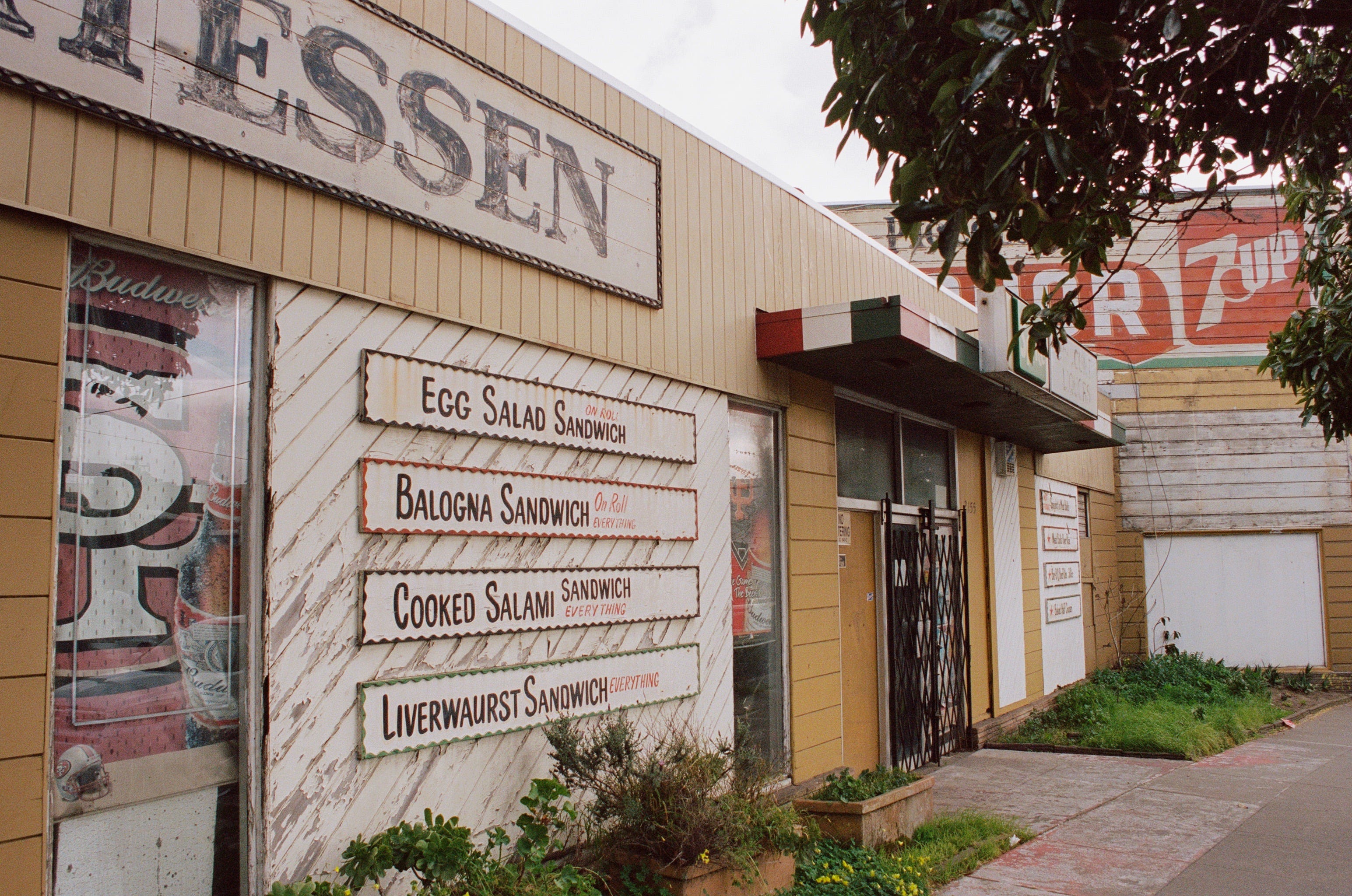
Bayshore Boulevard, where the Visitacion Valley stop is located, was busy with car traffic and less so with foot traffic. I strolled into the neighborhood, enamored with the colors and way San Bruno Mountain frames the valley. If there is one photo that captures the small moments I will miss most, it is this last one. The light-variable reflections of flowers and plants just feel more beautiful in San Francisco than they do anywhere else.








